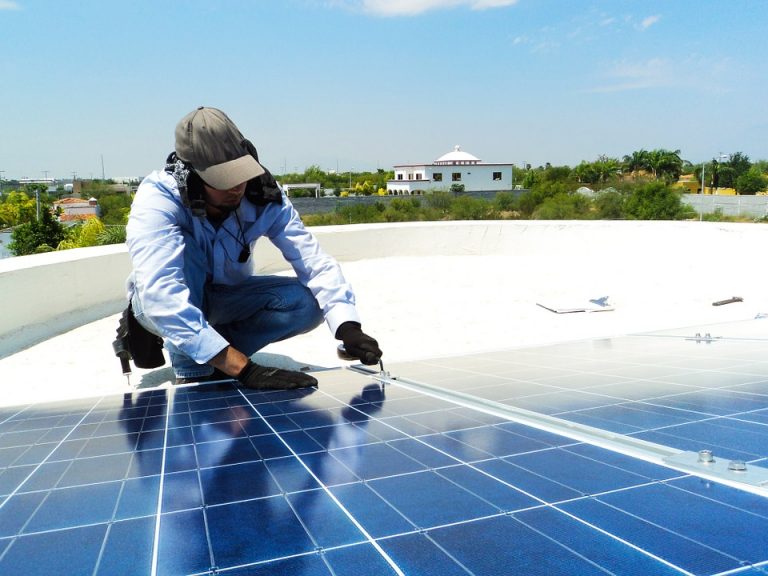According to ARENA, more than two million households in Australia have roof-mounted solar photovoltaic (PV) panels that collectively generate over 10 GW of electricity. Using renewable energy presents several economic and environmental benefits. So, it is no surprise that more and more Australians are switching to solar power or supplementing their main electricity supply with solar generators.
Making a solar investment is a big decision. We’ll take you through several key considerations when preparing to install residential solar panels to ensure you make the right choices.
Steps to be Prepared for a Solar Installation at Your Home
Switching to solar power is a thrilling step toward energy independence, lower bills, and a greener lifestyle. But before the solar panels go up on your roof, a slight preparation can make the procedure smooth and stress-free. Here’s a detailed guide to help you get ready for your solar installation.
1. Work out your Solar Energy Requirements
Calculate how much electricity your home requires and estimate your future electricity usage. You can derive consumption figures from your electric bill or household size. Remember to also factor in any foreseeable changes that might affect your domestic power usage. Knowing how much energy you need will help you select solar arrays and batteries powerful enough to efficiently meet the supply demands.
2. Address roof problems
Examine your roof thoroughly to determine whether it is structurally sound and ideal for solar installation. Make all the necessary repairs on an ageing roof before mounting solar panels; for instance, replace damaged shingles, reinforce weak sections, and fix all leaks.
Also, ensure that the roof’s surface gets plenty of sunshine throughout the day and is not obscured by shadows from overhanging tree branches, chimneys, or antennas.
3. Check Local Rules & Permissions
Every area has its own set of rules for solar installations. In numerous places, you’ll require approval from your municipality, housing society, or local electricity board.
Don’t worry, most professional solar installation companies undertake these permits and paperwork for you. It’s also vital to check whether your electricity provider allows net metering, which lets you send additional solar power back to the grid and earn credits on your bill.
4. Choose the Right Installer
The installer you select will make a significant difference in the quality and performance of your solar system. Look for a company that is CEC certified, experienced, and has good reviews from past customers.
Don’t just go with the cheapest quote; ask about warranties, maintenance services, and after-sales support. A respectable installer won’t just sell you panels; they’ll be your long-term partner in keeping your solar system running effortlessly for decades.
5. Select the Right Solar System
There isn’t a one-size-fits-all solar solution. You’ll prerequisite to choose whether you want an on-grid system (connected to the electricity grid), an off-grid system (completely independent), or a hybrid system (with both grid connection and battery backup).
For urban areas with common power cuts, a hybrid system with a solar battery can be a lifesaver. Discuss your household’s exclusive needs with your installer, and they’ll help you pick the best setup.
6. Plan for Solar Installation Day
When installation day arrives, your solar team will need access to your roof, terrace, or ground space. Make sure the area is clear and accessible, and move any furniture, plants, or storage items out of the way.
Depending on the size of your system, installation habitually takes between one and three weeks. Be prepared for some drilling, wiring, and minor construction work. If you have kids or pets, it’s a decent idea to stay them away from the work area for safety.
7. Post-Installation Steps
Once your solar panels are in a good place, there are a few final steps. If you’re on-grid, the electricity board will generally essential to inspect and approval of your system before it goes live. Your installer will show you how to monitor your system’s performance. Many setups come with mobile apps or online dashboards where you can track how much power you’re generating.
Finally, remember that solar panels are low-maintenance but not zero-maintenance. A simple cleaning every few weeks to remove dust, bird droppings, or leaves can keep your panels performing at their best.
Sumups: Preparing for solar installation at your home may feel like a big task, but every step confirms your system runs competently for the next 20–25 years. With the precise planning, you’ll relish reliable, clean, and affordable energy for decades to come.
Apply for Rebates and Incentives
The federal and local governments support and encourage solar power generation by providing rebates and incentives to homeowners looking to install solar panels. A popular example is the Small-scale Renewable Energy Scheme that rewards individuals and small businesses that put up wind or solar power systems. Additionally, the Solar Homes Programme provides Victoria’s residents with rebates of up to 50 per cent of the purchase cost of solar PV panels.
Check your eligibility for such rebates to see if they can help reduce your initial solar installation cost and offer even more benefits down the road.
Find the Right Solar Contractor
The success of your solar installation will largely depend on the contractor you hire. Research the solar installation companies in your area and settle for a highly skilled and experienced contractor with a proven track record of providing quality products and services.
A good solar specialist will guide you through the entire installation process, helping you make the right purchase decisions, avoid mistakes, and ensure the solar system serves its best purpose reliably and efficiently.
Solar Miner is a Victorian solar installation company with three solid years of experience in the energy industry and a dedicated team of skilled electrical technicians. Reach us through our website or call us on 1300 285 885 to get the best customer service and expertise for your solar project.




